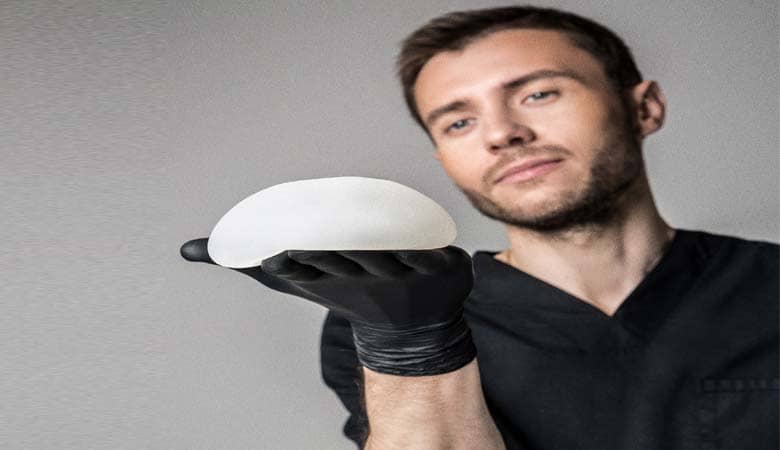
Breast implants have become increasingly popular in recent years, with over 300,000 women undergoing breast augmentation surgery in the United States alone each year.
For many women, breast implants offer a way to enhance their appearance and boost their self-confidence. However, breast augmentation is still a major surgery that requires thoughtful consideration beforehand. Understanding all aspects of breast implants, from the different types available to potential risks and recovery time, is important. Doing thorough research is key to ensuring breast implants are the right choice.
This blog explores some crucial things every woman should know before getting breast implants. A thorough knowledge of these key factors will help set realistic expectations and ensure you make the most informed decision about whether breast augmentation is right for you.
Types of breast implants
There are two main types to consider: silicone and saline.
Silicone implants have a silicone outer shell filled with a viscous silicone gel. Saline implants have a silicone shell filled with sterile saltwater. Both provide volume and shape to the breasts, but there are some differences:
- Silicone feels more natural, while saline can sometimes wrinkle or ripple.
- Silicone is typically more expensive.
- With saline, leaks may be more noticeable as the breast deflates, while silicone leaks may go undetected.
- Silicone is approved for women 22 and older. Saline is approved for women 18 and older.
The demand for smaller breast implants has recently been growing, reflecting a trend toward more natural-looking enhancements. When choosing implants, women should consider the pros and cons of each type, including size preferences, and discuss with their surgeon which option may work best.
Implant shapes and sizes
Breast implants come in various shapes and sizes to accommodate different bodies and aesthetic goals. Some key choices include:
- Round or teardrop shape
- Smooth or textured surface
- Low, moderate, or high profile
- Implant volume or cup size
Work with your surgeon to select the shape and size that aligns with your natural anatomy and desired results.
Incision locations
There are three main incision sites for breast augmentation:
- Under the breast (inframammary)
- Around the areola (periareolar)
- Under the arm (transaxillary)
Each involves a small cut to insert the implant. Discuss with your surgeon the best option for minimizing scarring and achieving optimal results.
Potential risks
While breast implants carry relatively low risk, it’s important to be aware of possible complications:
- Capsular contracture – scar tissue tightens around the implant. This can cause pain, distorted breast shape, and palpability. It may occur shortly after surgery or years later.
- Infection – In rare cases, bacteria can enter the surgical wound and cause infection. Symptoms include fever, redness, swelling, and pus. This may require IV antibiotics or implant removal.
- Implant leakage/rupture – The shell can tear or leak over time. Silicone gel may remain within scar tissue. Saline will absorb into the body. This requires replacement surgery.
- Rippling or wrinkling – This can occur when there is insufficient tissue to cover the implant, especially with saline. Wrinkling may be visible and bothersome.
- Loss of nipple sensation – Nerve damage during surgery can lead to numbness or loss of sensation in the nipples or breast skin. This is often temporary but can be permanent.
Carefully following your surgeon’s pre- and post-op instructions can help reduce risks.
Recovery time
It typically takes 3-6 weeks to recover from breast augmentation surgery. During this time, you can expect:
- Swelling and bruising – This may last several weeks as the breasts settle into position. Use cold compresses to help reduce swelling.
- Mild to moderate pain – Your doctor will prescribe medication to manage post-op pain. Take as directed.
- Restricted activity for about a week – Avoid lifting, bending, and straining. Follow any activity restrictions from your surgeon.
- Wearing a surgical bra for support – This helps minimize swelling and supports implants during healing.
Give your body plenty of rest and follow your surgeon’s guidelines for a smooth recovery. Most women can return to work within a week.
Cost
The average cost of breast augmentation surgery can go above $4,000 just for the surgeon’s fee. Anesthesia, operating room, and other expenses can add another $1,000 – $2,000. Health insurance typically does not cover cosmetic procedures like implants. Be sure to account for the full costs when planning your budget. Many surgeons offer payment plans if needed.
Breastfeeding impact
For women considering children, it’s vital to know breast implants can impact the ability to breastfeed successfully. Implants may interfere with milk production by putting pressure on milk ducts, cutting the milk supply. Some women have no issues breastfeeding after augmentation, while others find it challenging or impossible. Discuss concerns thoroughly with your surgeon. Be aware that breastfeeding difficulties may require implant removal.
Mammograms
Women with implants must get specialized mammogram imaging like 3D mammography or breast tomosynthesis. This allows for properly detecting breast cancer or tumors around the implant edges. Be sure to inform all healthcare providers about your implants so appropriate screenings are ordered. Implants may also require occasional MRI scans to check for silent ruptures.
Capsular contracture risk
One of the most common complications is capsular contracture, where scar tissue tightens around the implant. Symptoms include painful, hard, misshapen breasts. Mild contracture may resolve with a massage. More severe cases require surgery to remove or replace the implants. Following strict post-op massage protocols can help minimize this risk.
Choosing your surgeon
Take ample time to carefully select a board-certified plastic surgeon with extensive experience successfully performing many breast augmentations. Review before/after photos, visit the office, and ask about the surgeon’s credentials, training, complication rates, and the number of procedures performed. A reputable, highly skilled surgeon can help ensure optimal results.
Conclusion
Understanding the different types of implants, surgical factors, risks, recovery, and long-term considerations is imperative for women considering breast implants. Thoroughly researching all aspects of breast augmentation can lead to reasonable expectations and increased satisfaction with your decision and results.
While breast implants have risks to consider, for many women, the benefits of enhancing their figure, balance, and self-confidence make breast augmentation a worthwhile choice.




